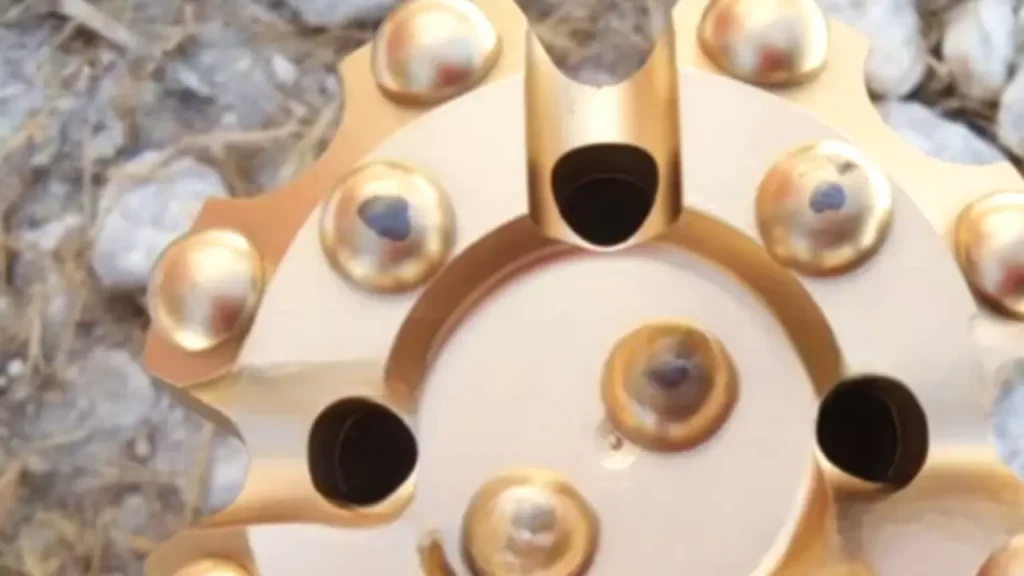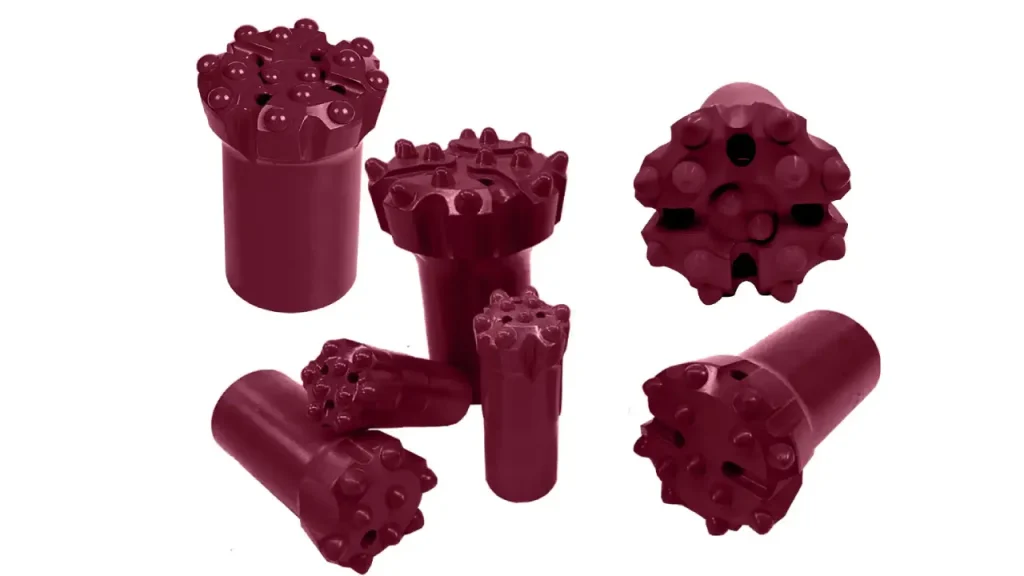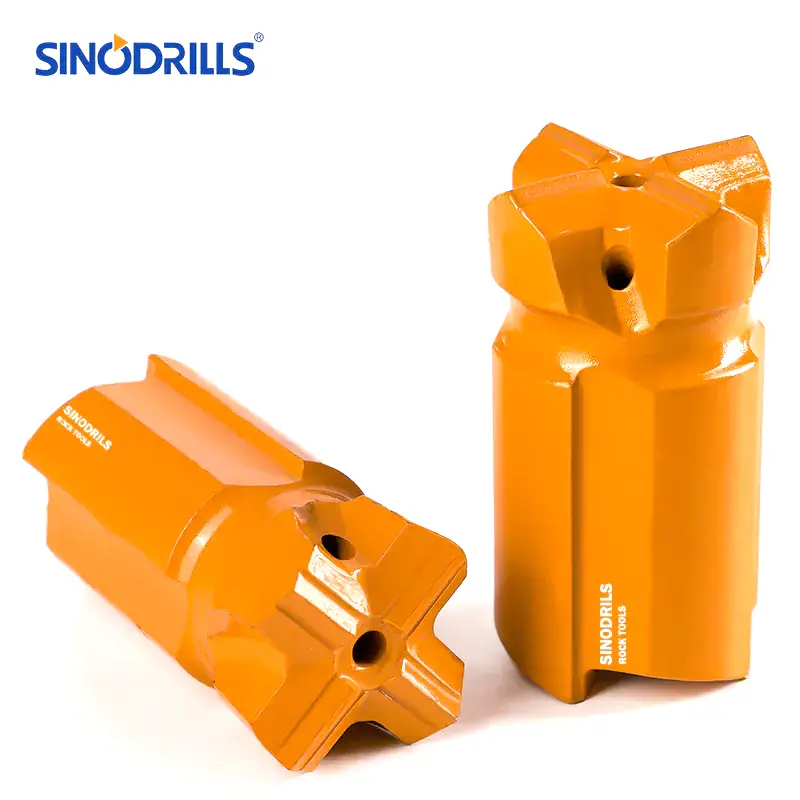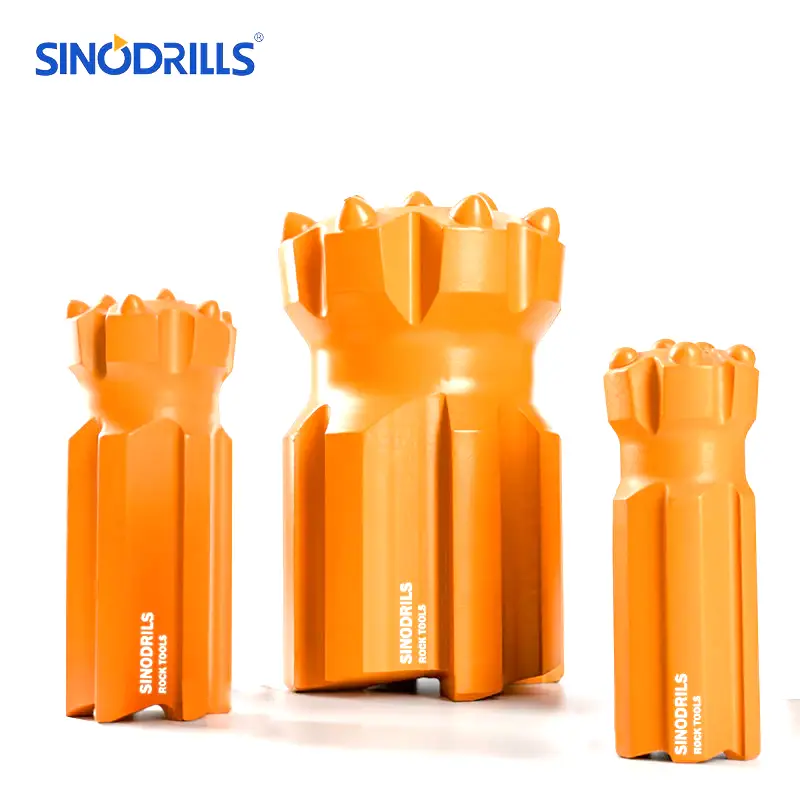Curious about maximizing efficiency and minimizing downtime in your drilling operations? This blog post delves into the practical applications and proper techniques for using a retractable drill bit. Often overlooked, these innovative tools offer significant advantages, especially when navigating varied ground conditions or requiring precise control over drilling depth.
We’ll guide you through the setup, operation, and maintenance of retractable drill bits, ensuring you can leverage their unique features to enhance productivity. Whether you’re a seasoned professional or new to advanced drilling equipment, understanding how to effectively wield this tool can transform your project outcomes.
What is a Retractable Drill Bit?
A retractable drill bit is a specialized drilling tool designed with a mechanism that allows a portion of the bit, typically the cutting elements, to retract or collapse into the main body of the drill string. This unique feature enables the bit to be inserted into or removed from a borehole without the need to pull the entire drill pipe out of the ground.
This is particularly advantageous in deep drilling operations, such as those in mining or oil and gas, where repeatedly tripping the entire drill string is time-consuming and costly. The retractable design can also provide controlled depth drilling in certain applications, and some variations are designed to expose different cutting elements as needed.
How Does a Retractable Drill Bit Work?
A retractable drill bit operates on a clever mechanical principle that allows its cutting elements to extend for drilling and retract for passage through narrower sections of a borehole or casing. The core mechanism involves movable components, often wings, blades, or concentric segments, that can expand outwards to cut a larger hole and then collapse inwards to fit through a smaller diameter. This expansion and retraction are typically controlled by manipulating the drill string from the surface, often through changes in weight-on-bit, rotation, or fluid pressure.
Here’s how a retractable drill bit typically works:
- Extension for Drilling: When the drill bit reaches the desired drilling depth or formation, a specific action (e.g., applying downward weight, increasing fluid pressure, or a particular rotational movement) engages the internal mechanism. This causes the cutting elements to deploy radially outwards, expanding the bit to its full cutting diameter.
- Cutting Action: Once extended, the bit functions like a conventional drill bit, with the expanded cutting elements engaging the rock or material. The drill string rotates, and weight is applied, allowing the bit to effectively drill the hole at its full expanded diameter.
- Retraction for Passage: To pull the drill string out of the hole, or to pass through a section of casing or a smaller previously drilled hole, a reverse action is initiated. This could involve lifting the drill string, reducing fluid pressure, or reversing rotation, which triggers the internal mechanism to retract the cutting elements back into the bit body.
- Smooth Passage: With the cutting elements retracted, the bit’s outer diameter is significantly reduced. This allows the entire drill string, including the bit, to be pulled through narrow sections of the borehole or casing without getting stuck or damaging the wellbore, saving significant time and resources compared to tripping out the entire string.
How to Use a Retractable Drill Bit?

Using a retractable drill bit effectively involves understanding its unique mechanism and following specific steps to ensure safe and precise drilling. These bits are designed for efficiency, often allowing for depth control or passage through constricted areas.
Step 1: Understanding the Mechanism
A retractable drill bit, as we design it, features a movable component that allows the cutting head or a part of the bit to retract into the main body. This innovative mechanism is fundamental for specific applications, such as enabling our drill strings to pass through existing casing in oil and gas wells, or to navigate previously drilled smaller-diameter holes without the need to pull the entire drill string from the ground.
We encourage you to familiarize yourself thoroughly with how your particular retractable bit engages and disengages its cutting elements or depth-setting feature. This knowledge is paramount for safe and effective operation.
Before beginning any drilling operation, it is absolutely essential to conduct a comprehensive visual and functional inspection of the drill bit. We advise you to look for any signs of wear on the cutting elements, hairline cracks on the bit body, or any obstructions within the retraction mechanism that could impede its smooth operation.
Ensure that all moving parts articulate freely and that the locking mechanism, if present, securely functions to hold the bit in its extended (drilling) or retracted (passage) position. A meticulous inspection at this stage is crucial to prevent operational failures, ensure optimal performance, and mitigate potential safety hazards during drilling.
Step 2: Preparing the Drill Rig and Workpiece
Proper and meticulous setup of your drill rig is a foundational step for successful and safe drilling with a retractable bit. We recommend you ensure the drill rig is absolutely stable, perfectly level, and possesses the necessary power and torque to handle the specific size and type of the retractable bit, as well as the characteristics of the material being drilled.
Verify that the drill chuck or the primary connection point on the rig is meticulously clean and entirely free of any debris, grease, or foreign matter, which could compromise the secure and concentric fit of the drill bit.
Equally important is the preparation of the workpiece. We advise you to secure the material firmly using appropriate clamping devices or vises to prevent any movement, rotation, or slippage during the drilling process. Unsecured workpieces can lead to highly inaccurate holes, bit breakage, or even severe personal injury.
If the retractable drill bit we’ve provided features a controlled depth mechanism, precisely mark your desired drilling location on the workpiece. Then, meticulously set the desired drilling depth on the bit itself, in strict accordance with your project’s specific requirements and design specifications, ensuring the bit is locked in that position if applicable.
Step 3: Engaging the Retraction Feature
The precise method for engaging or disengaging the retraction feature on your drill bit will vary significantly based on the specific design of the tool you have. Some advanced retractable bits we offer might incorporate a sophisticated hydraulic or pneumatic actuation system, requiring external controls from the drill rig.
Others may utilize a mechanical locking mechanism that requires a specific rotational movement, a push-and-twist action, or even a specialized key to engage or disengage the cutting elements. We always urge you to refer to and strictly follow the manufacturer’s detailed instructions and operational manual for your exact bit model to understand and operate its unique retraction mechanism correctly.
Once the drill bit has been successfully set to the desired operational mode – whether that is fully extended for the primary drilling operation, or securely retracted for passage through a smaller diameter section of the borehole – it is absolutely imperative to confirm that the mechanism is securely locked in place.
A failure to properly and fully engage or disengage the retraction mechanism can lead to a cascade of negative consequences, including severe damage to the drill bit itself, highly inaccurate or incomplete drilling, and, most critically, significant safety hazards during the drilling process that could endanger personnel and equipment.
Step 4: Drilling and Monitoring
We advise you to initiate the drilling process at a relatively slow rotational speed, allowing the drill bit to properly center itself on the marked drilling point and to smoothly begin the initial cut into the workpiece. Once the bit has established a stable pilot, gradually and steadily increase the drilling speed to the appropriate RPM for the material and bit type, simultaneously applying consistent, appropriate downward pressure.
Crucially, avoid applying excessive or jerky force, as this can cause the bit to bind, overheat, deflect, or potentially damage both the bit and the material being drilled. Allow the drill bit’s inherent cutting action to perform the work efficiently.
During the entire drilling operation, we recommend you maintain continuous and vigilant monitoring of the process. Pay close attention to subtle cues such as the sound emitted by the drill rig, which can indicate smooth operation or potential issues, the tactile feel of the resistance encountered by the drill bit, and critically, the quality and consistency of the chips or cuttings being produced. If you observe any unusual vibrations, detect the smell of burning, notice smoke, experience a sudden decrease in drilling efficiency, or encounter any other anomalous behavior, stop immediately and inspect both the drill bit and the workpiece for any underlying issues or damage before proceeding.
Step 5: Retracting and Removing the Bit
Upon the completion of the drilling operation, or when it becomes necessary to navigate a constricted section of the borehole, carefully activate the retraction mechanism of the drill bit in strict accordance with its specific design and the manufacturer’s instructions.
We emphasize that you ensure the cutting elements are fully and securely retracted into the bit body before attempting to pull the drill bit out of the completed borehole, or before attempting to pass it through any section of a smaller diameter. This crucial step is paramount to preventing significant damage to the delicate cutting edges of the drill bit and to avoid scoring or damaging the integrity of the borehole itself.
After successfully retracting the bit, carefully and steadily withdraw the drill bit from the workpiece or the borehole, maintaining a smooth, controlled, and consistent motion. Avoid any sudden jerks or forceful pulling that could snag the bit or cause injury. Once the bit is fully removed, we recommend you meticulously clean it by removing all accumulated debris, chips, and any lubrication residues.
A thorough cleaning not only preserves the bit’s condition but also allows for a final inspection. Store the bit properly in a protective casing or designated storage area to safeguard its precision cutting edges and its intricate retraction mechanism for future use, ensuring its longevity and readiness for subsequent projects.
Why Use Retract Drill Bits
Retract drill bits offer significant advantages, particularly in complex or deep drilling operations, by allowing for greater flexibility and efficiency compared to conventional drill bits. Their unique ability to retract or collapse parts of the bit body revolutionizes how drilling is approached in challenging environments.
These bits are invaluable for reducing operational downtime and enhancing safety. By eliminating the need to frequently trip the entire drill string out of the hole, they save considerable time and effort. This design innovation is crucial in industries where efficiency directly impacts project timelines and costs, making retractable drill bits a highly beneficial investment.
Here are the key reasons why you should use retract drill bits:
- Reduced Trip Time and Increased Efficiency:We design our retract drill bits to minimize the time spent pulling the drill string in and out of the borehole. This significantly speeds up operations, especially in deep drilling, by allowing seamless passage through casing or smaller hole sections without full string retrieval.
- Enhanced Borehole Integrity:The retractable design helps protect the borehole wall during bit insertion or withdrawal. By reducing friction and contact with the casing or rock, our bits minimize the risk of damage, ensuring the integrity of the drilled hole for subsequent operations.
- Versatility in Challenging Formations:Our retractable bits are engineered to perform effectively in diverse geological conditions, including unconsolidated or unstable formations. Their ability to retract allows them to navigate difficult ground without getting stuck, preventing costly delays and potential accidents.
- Improved Safety and Cost-Effectiveness:By reducing the need for repeated drill string trips, we enhance safety on the rig by minimizing personnel exposure to heavy machinery. Furthermore, the extended lifespan of the bit and reduced operational downtime contribute to significant long-term cost savings.
- Precision and Control in Drilling:Some of our retractable bits offer precise depth control or the ability to expose different cutting elements as needed. This allows for greater accuracy in specialized drilling tasks, optimizing performance and achieving desired results with higher consistency.
Where to Use Retract Drill Bits?

Retract drill bits are primarily utilized in specialized drilling applications where the ability to alter the bit’s configuration while downhole offers significant operational advantages. Their design makes them ideal for scenarios where conventional bits would necessitate time-consuming and costly full drill string trips.
These bits are particularly prevalent in industries that deal with complex geological formations, varying borehole diameters, or the need to pass through existing infrastructure within the well. Their versatility ensures efficiency and safety in demanding drilling environments, making them a crucial tool for optimizing project timelines and reducing overall expenses.
Here’s where retract drill bits are typically used:
- Oil and Gas Exploration and Production: We see widespread use in “casing while drilling” (CWD) operations. This allows the drill bit and casing to be run simultaneously, then the bit can retract to pass through the casing, protecting borehole integrity and preventing collapse in unstable formations.
- Mining and Tunneling: Our retract drill bits are employed in creating pilot holes that need to be enlarged for ventilation, rock bolting, or explosive placement, especially when navigating through varying rock hardness or existing support structures without removing the entire drill string.
- Water Well and Geothermal Drilling: When drilling through different strata that might require varied borehole diameters or passing through installed casing, our retractable bits offer the flexibility to change bit size downhole, streamlining the process and reducing the risk of stuck tools.
- Geotechnical and Foundation Drilling: In projects requiring precise boreholes that pass through mixed ground conditions, such as unconsolidated soil layers followed by hard rock, our retractable bits facilitate seamless transitions without the need for multiple bit changes at the surface.
- Specialized Construction and Infrastructure Projects: For intricate work that involves drilling in confined spaces or through existing conduits, our custom retractable bits can provide the necessary control and maneuverability to complete tasks that would be challenging with standard drilling tools.
Conclusion
Properly utilizing a retractable drill bit is key to maximizing its efficiency and extending its lifespan. By understanding its unique mechanism for adjusting drilling depth and ensuring correct application, you can achieve precise and clean holes while minimizing wear on the tool. Always ensure the bit is securely locked at the desired depth before operation to prevent slippage and damage.
Mastering the use of these versatile tools can significantly enhance productivity in various drilling tasks, from precise depth control in woodworking to specialized applications in construction. Their design allows for adaptability, making them a valuable asset in any toolbox when controlled depth is a critical factor.
For those looking to optimize their drilling operations, consider the advantages of retractable drill bits. When you’re ready to acquire these efficient tools in bulk, you can get wholesale retract drill bits directly from Sinodrills, a trusted manufacturer known for quality and reliability in drilling solutions.




